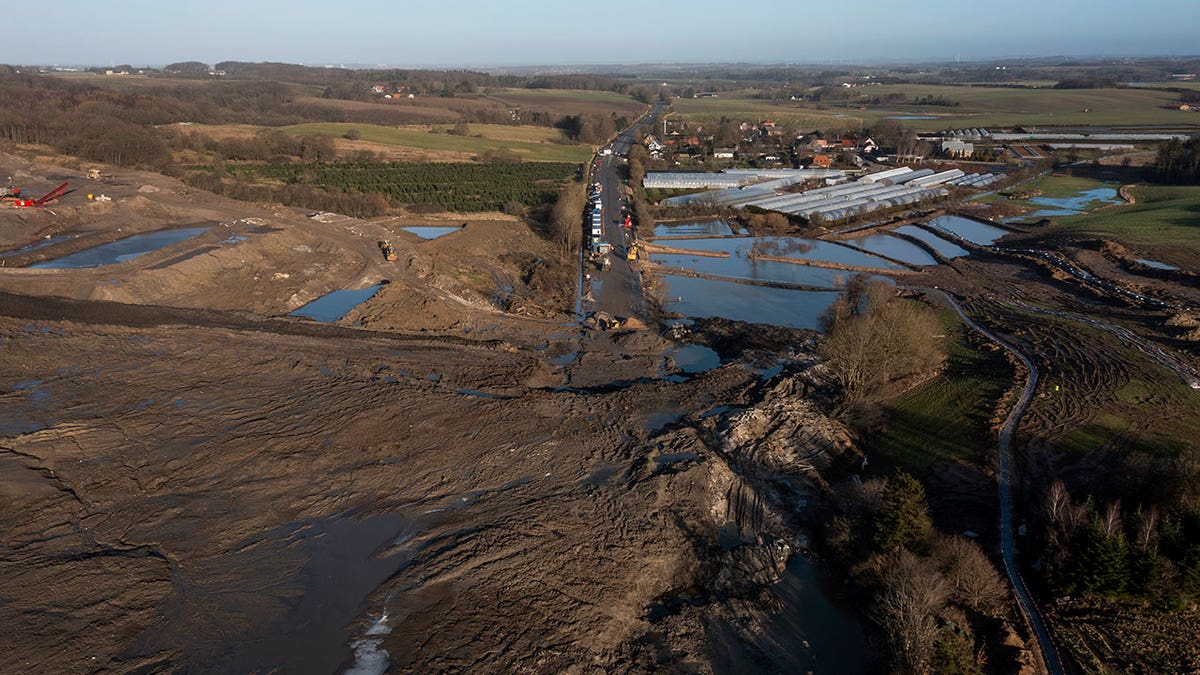Video shows aftermath of China landslide that buried 47
Rescuers searching for survivors in Liangshui village after a landslide in southwestern China. (Credit: Reuters)
- Danish authorities are racing against time to prevent a landslide of contaminated soil from reaching a water source.
- The landslide, which started on Dec. 10, prompted Nordic Waste to abandon control efforts, leaving the cleanup task to Randers Municipality.
- A Geological Survey report blamed continuous soil deposition at Nordic Waste as the main cause, noting landslides in the region since 2021.
Authorities in Denmark are working against the clock to stop a slow-moving landslide of contaminated soil from reaching a nearby water source as public officials and the company that operated the site argue over who should pay for the massive cleanup.
The 250-foot-tall heap of dirt at the Nordic Waste reprocessing plant south of the town of Randers in northwestern Denmark contains some 100 million cubic feet of soil contaminated with heavy metals and oil products. It is moving at a pace of up to 16 inches per hour toward a stream connected to the Baltic Sea via the Randers Fjord.
The landslide started Dec. 10. Nine days later, Nordic Waste gave up on getting it under control, leaving the task up to the Randers Municipality, which has been rerouting the stream by laying pipes allowing it to pass the site safely.
NOROVIRUS ALERT: FDA WARNS OF CONTAMINATED RAW OYSTERS FROM MEXICO
Environment Minister Magnus Heunicke said Friday that authorities are working on extending those pipes and that a sheet pile wall is being constructed, along with several basins for the contaminated water.

The area affected by a landslide of contaminated soil is pictured near the village of Oelst, near Randers, Denmark, on Jan. 25, 2024. (Bo Amstrup/Ritzau Scanpix via AP)
Water from rain and melting snow are the biggest problems, Heunicke said. In the past week, western Denmark has seen huge amounts of snow and rain.
"It’s about separating the polluted water from the clean water," he told a news conference, adding that the work is "enormously difficult."
On Monday, a report by the Geological Survey of Denmark and Greenland, or GEUS, said the continuous deposit of soil on top of a sloping clay pit at Nordic Waste was the main cause for the landslide. GEUS added that there had been landslides in the region since 2021.
United Shipping and Trading Company, or USTC, which is behind Nordic Waste, earlier blamed the landslide on climatic conditions beyond its control. The area "has been exposed to enormous amounts of rain, as 2023 has been the wettest year ever in Denmark. This has resulted in a natural disaster of a caliber never before seen in Denmark," it said.
It is still unclear who will have to pay for the cleanup. Nordic Waste was declared bankrupt earlier this week after the Danish Environmental Protection Agency ordered it to provide security of more than $29.2 million to prevent an environmental disaster.
Denmark's Prime Minister Mette Frederiksen, who visited the site Monday, said it would be unfair if Danish taxpayers had to pay.
Nina Østergaard Borris, Nordic Waste's CEO, said it would take up five years to restore the site, and it could potentially cost billions of kroner. She said the situation "is far more serious than anyone could have imagined, and the task of saving the area is far greater than what Nordic Waste or USTC can handle."
The case has started a debate about whether Nordic Waste has a moral responsibility to pay. The government has lashed out at Denmark’s sixth-richest man, Torben Østergaard-Nielsen, who is behind USTC, for not paying.

